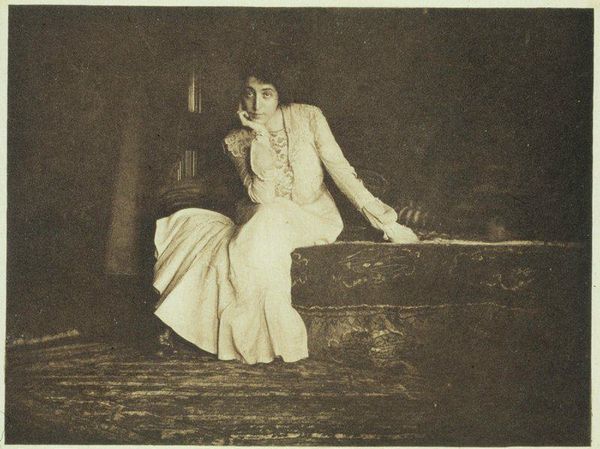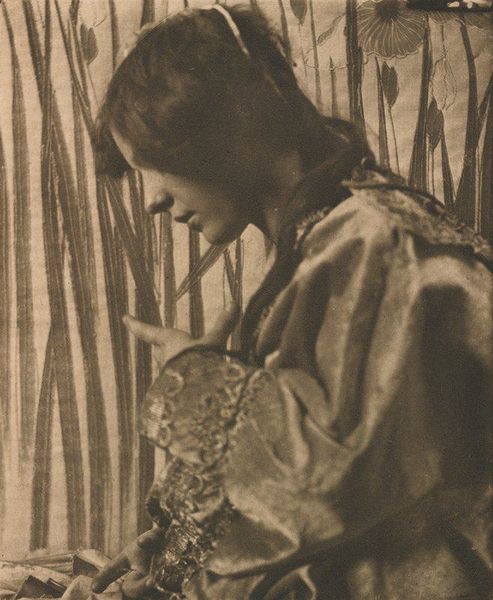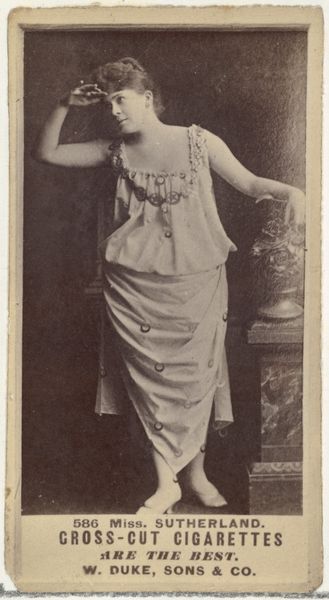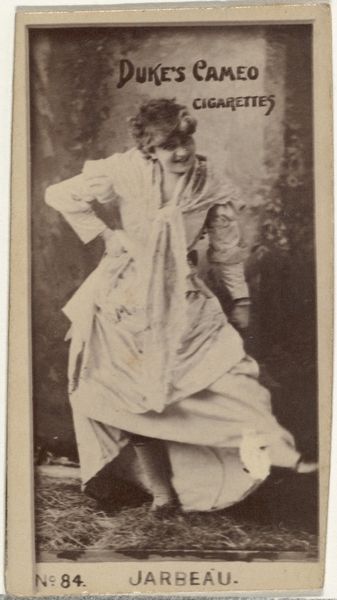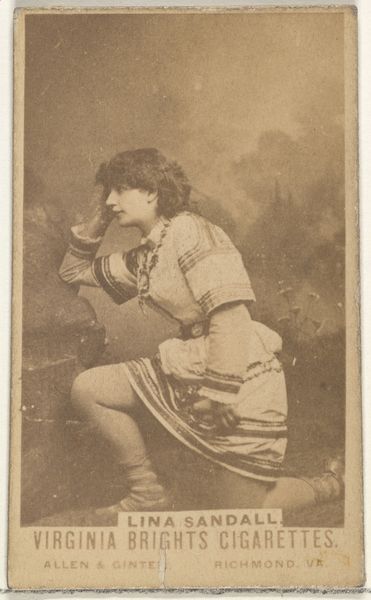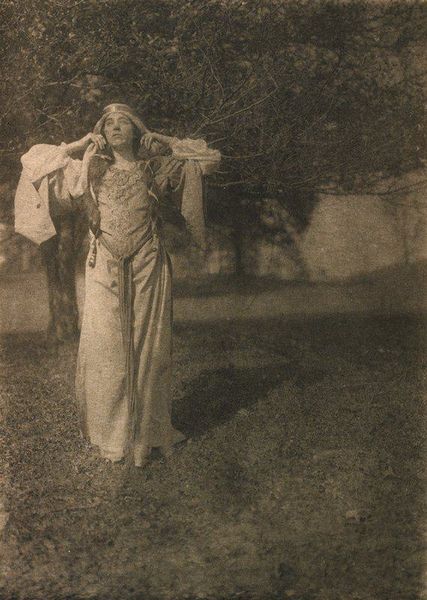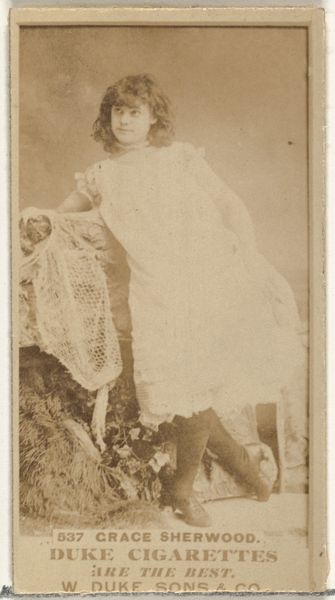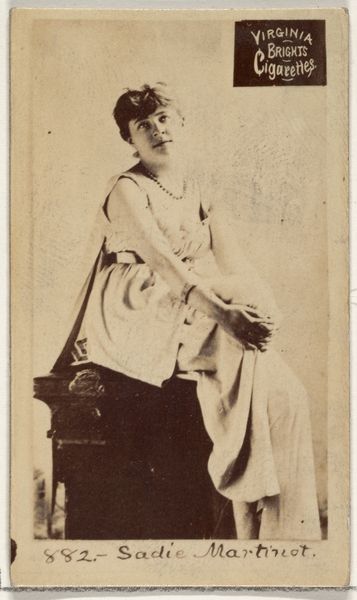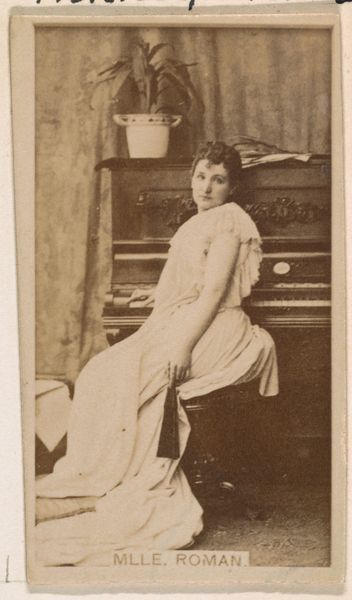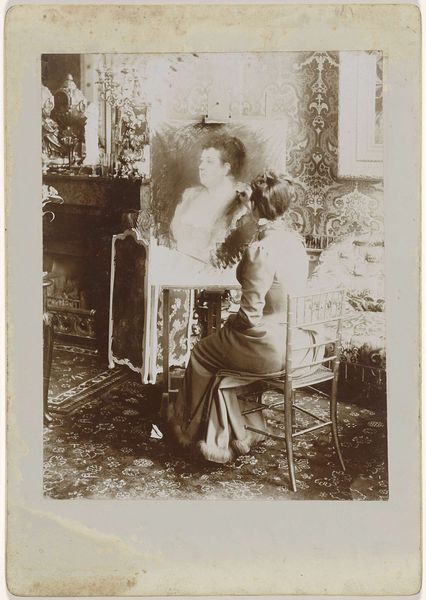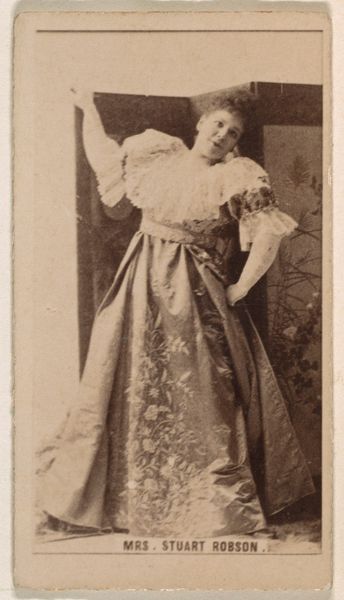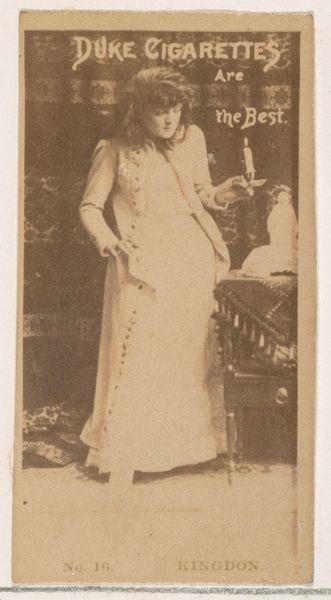
photogravure, photography
#
portrait
#
16_19th-century
#
photogravure
#
pictorialism
#
photography
#
19th century
Dimensions: 4 3/4 x 6 5/16 in. (12.07 x 16.03 cm) (image)
Copyright: No Copyright - United States
Curator: Joseph T. Keiley, known for his contributions to the Pictorialist movement, created this haunting portrait, titled "Portrait--Miss De C." sometime between the 19th and 20th century. It’s a photogravure and we see it here at the Minneapolis Institute of Art. What’s your first reaction? Editor: Oh, it's wonderfully melancholic. Like a page torn from a long-lost novel. The sepia tones feel heavy, like they're steeped in the past. It reminds me of old photographs found in antique stores, whispering stories of bygone eras. Curator: That sepia tone you noticed is very much by design. Photogravure as a process lent itself to that warmth, linking it to the visual language of established printmaking. It's a conscious effort by Keiley to elevate photography to the realm of high art. Editor: Absolutely. The subject's pose, too, speaks of carefully constructed artistry. She’s caught in thought, gazing beyond the frame with soulful eyes. There's a distinct air of Pre-Raphaelite influence, wouldn't you agree? I imagine her dreaming about unattainable love in a drafty castle. Curator: I think that connection holds weight. Pictorialists aimed for an aesthetic kinship with painting through their manipulation of photographic techniques. Notice the soft focus here, achieved during development. It minimizes sharp details, emphasizing mood and emotion over realistic precision. It’s almost like an echo. Editor: Right, almost painterly in its ambiguity. You know, it's interesting how portraiture shifted around that time. The subject is not defined through social markers of class or accomplishments, but seems caught in a moment of inner contemplation, where the boundaries of the visible become blurred. I feel like I could imagine my own story about her so easily. Curator: Well, Keiley's portrait really captures the essence of Pictorialism's ideals. His images prompt questions about photography's place in culture, it's relation to print-making, and how symbolism communicates memory. Editor: And to me, as a modern viewer, it evokes a longing for a world draped in mystery and quiet reflection. Like stumbling upon a secret world, or perhaps, rediscovering a piece of ourselves lost in time. What a gorgeous image to end our day on. Curator: Agreed, there's much to find here, much to find.
Comments
No comments
Be the first to comment and join the conversation on the ultimate creative platform.
